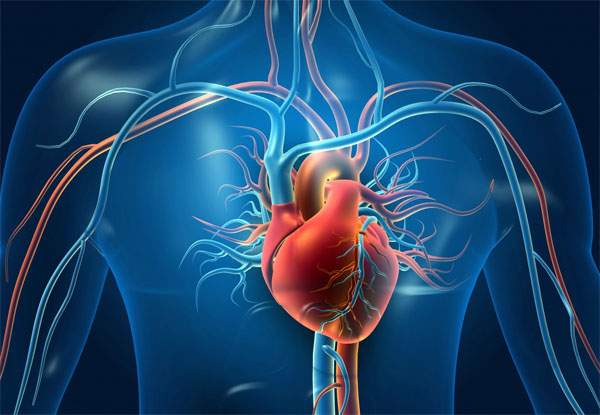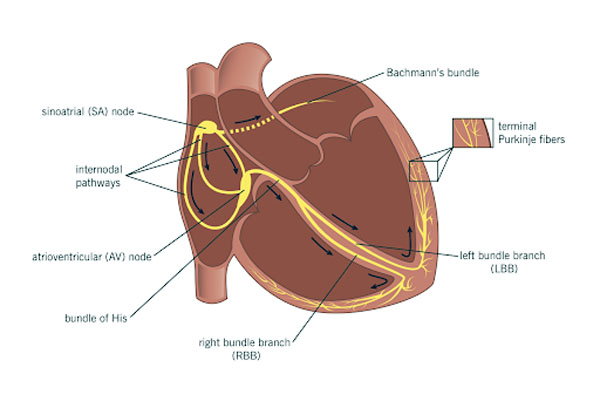Heart health and proper function circulate millions of gallons of blood to the entire body. The circulation moves:
- Oxygen
- Fuel
- Hormones
- Essential cells
- Other compounds
- Removes metabolic waste products

If the heart stops, vital functions can fail almost instantly. Family history and genetics play a role in the development of heart disease, but lifestyle choices also play a part. Heart health disease prevention focuses on:
- Weight control
- Nutritional recommendations
- Exercise
- Medications
Chiropractic treatment can help improve overall heart health.
Heart Health
If every nerve was disconnected, the heart would continue to beat. There is a small node of the heart muscle that rhythmically contracts and relaxes inherently, and sets the heartbeat pace. It can be thought of as a natural pacemaker and is called the sinoatrial node.

In an average adult, the node maintains a rhythm of around 70 beats per minute. This natural pacemaker keeps the heart working, while the nerves that accelerate and decelerate (the sympathetic and parasympathetic nerves) can affect the sinoatrial node affecting the heartbeat.
Sympathetic and Parasympathetic Nerves
The sympathetic and parasympathetic nerves are located in the thoracic and upper cervical spine. With chiropractic, any spinal misalignments, pressure, stress, and restrictions are properly addressed, and able to normalize the cardiac rhythm and heart rate. Corrective treatment of the cervical spine will also help lower blood pressure and remove any stress on the cardiovascular system. Heart and spinal health are vital, contact a local chiropractor today.

Healthy Body Composition
Aerobic Training Strengthens The Heart
Aerobic exercise will strengthen the heart, as well as, train the heart to be more efficient in circulating blood. The chamber of the heart that pumps blood to the rest of the body literally gets larger and squeezes out more blood with each pump, meaning the stroke volume gets increased.
This improves cardiac output, which is the quantity of blood pumped by the heart per minute. A strong, efficient heart is the objective to live a long and healthy life. When the heart is stronger and pumps more blood it doesn’t have to beat as much and as rapidly. Lowering the resting heart rate is associated with a reduced risk of cardiovascular disease.
Cardiac adaptations are helped with an increase in blood volume that happens with aerobic exercise training. What happens is the expanded blood volume improves the heart’s contractility/fill capacity pumping more blood per beat. The heart contracts to move blood throughout the body. By making it stronger and more efficient, the heart’s responsibilities are lightened by decreasing the different types of resistance.
Dr. Alex Jimenez’s Blog Post Disclaimer
The scope of our information is limited to chiropractic, musculoskeletal, physical medicines, wellness, and sensitive health issues and/or functional medicine articles, topics, and discussions. We use functional health & wellness protocols to treat and support care for injuries or disorders of the musculoskeletal system. Our posts, topics, subjects, and insights cover clinical matters, issues, and topics that relate and support directly or indirectly our clinical scope of practice.*
Our office has made a reasonable attempt to provide supportive citations and has identified the relevant research study or studies supporting our posts. We also make copies of supporting research studies available to the board and or the public upon request. We understand that we cover matters that require an additional explanation as to how it may assist in a particular care plan or treatment protocol; therefore, to further discuss the subject matter above, please feel free to ask Dr. Alex Jimenez or contact us at 915-850-0900. The provider(s) Licensed in Texas& New Mexico*
References
Yang, Jian et al. “Physical Exercise Is a Potential "Medicine" for Atherosclerosis.” Advances in experimental medicine and biology vol. 999 (2017): 269-286. doi:10.1007/978-981-10-4307-9_15




